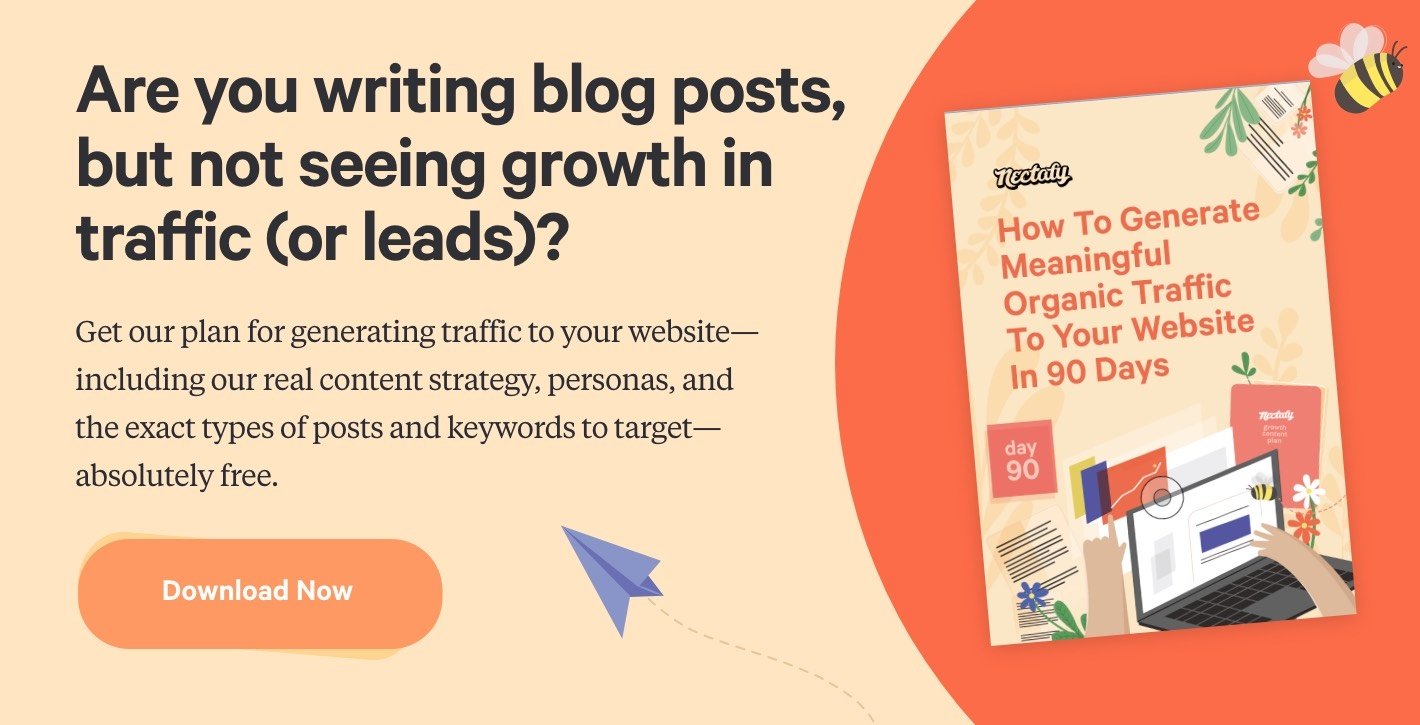Is Link Building Still Relevant To SEO In 2023?



Ah link building, the age-old tactic that’s been around since the early days of search engine optimization (SEO).
The concept of link building for SEO has gone through many changes over the past few years, from Google’s 2011 rollout of the Panda update to hedge off spammy link building practices (like content farming) all the way to the 2021 Link Spam update that helped address the problem of low-quality link building overall.
With all these changes Google’s been making to address the dark side of this practice, it begs the question: Is link building still relevant to SEO in 2023?
To answer this question, we decided to take a closer look at the practice of link building and our revamped approach to it.
Quick Refresher: What is link building?
Link building is the practice of getting links that point back to your website from other websites across the internet. When a website links to your website, this is what’s referred to as a backlink.
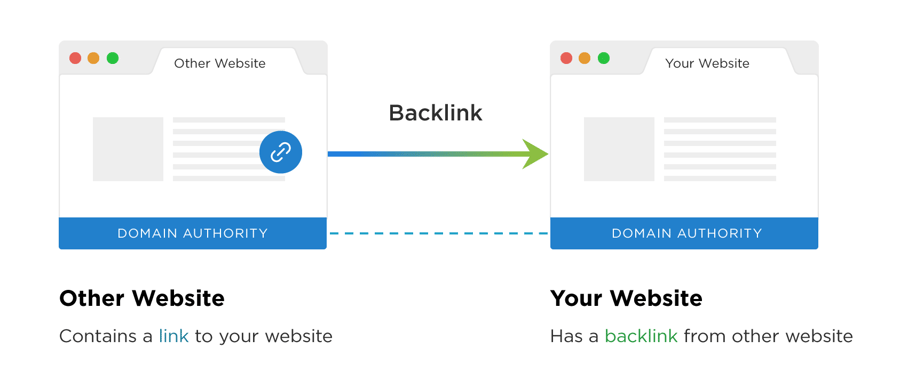
Backlinko
The more backlinks that your website gains (especially from sites with high domain authorities) the more your website’s SEO improves—which helps with things like keyword rankings and growing organic traffic.
This transfer of SEO value from one website to another website through a backlink is what’s commonly referred to as link juice.
Seems pretty straightforward, right?
Well, it’s a little more complicated than that, for a couple of reasons:
1 Not all backlinks are created equal.
In order to combat spammy link building tactics, Google has created different HTML attributes that site owners can attach to any of the links they put on their website, which include:
- dofollow links = The gold standard of backlinks. These links do not have any attributes attached to them, essentially telling Google’s web crawlers to pass on as much link juice as possible to the web page associated with it.
- nofollow links = These are tagged with the “rel=nofollow” HTML attribute and are the complete opposite of dofollow links, telling Google’s web crawlers to not pass on any link juice to the web page associated with it.
- sponsored links = Similar to the nofollow, these are tagged with the “rel=sponsored” HTML attribute and are used to indicate links that were created as part of advertisements, sponsorships, or other compensation agreements. These also do not pass on any link juice.
- user generated content (ugc) links = These are tagged with the “rel=ugc” HTML attribute and are mostly used for links that are generated within comments and user forums (like Reddit). Like the nofollow and sponsored links, these do not pass on any link juice.
To the average website reader, these link attributes won’t make a difference in how they show up on a web page.
But when it comes to the SEO value they pass off, they are very different in terms of the link juice (or lack thereof) that they pass on.
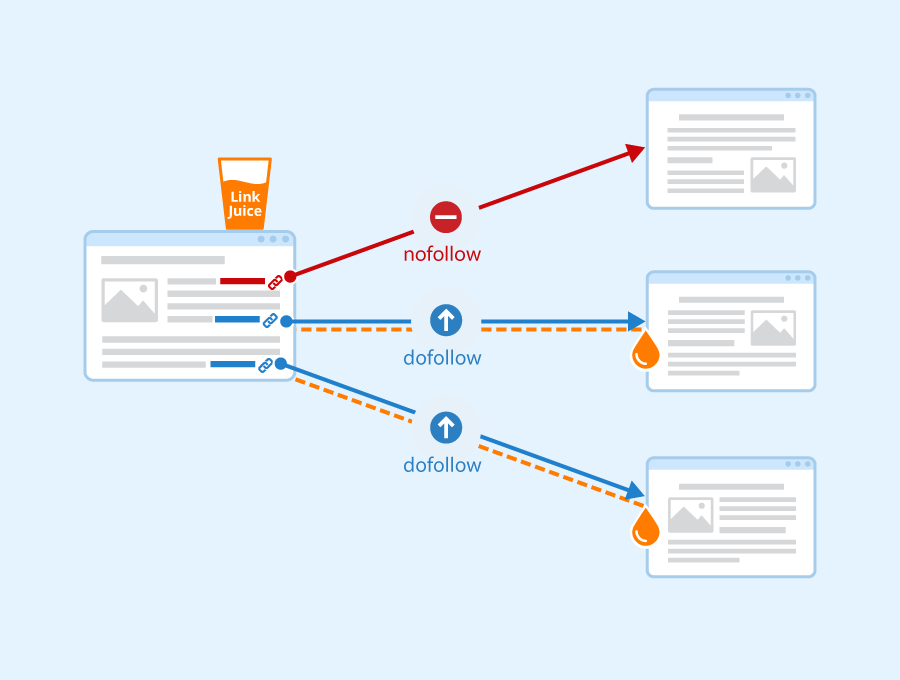
2 Link juice varies due to multiple on-page factors.
Even if you do manage to land a solid dofollow backlink for your website, the amount of link juice that it passes on to your web page could vary depending on the following factors:
- Location of the backlink = Links listed at the top of a web page pass on more link juice than ones at the bottom of a web page.
- Number of other links on the same page = Total link juice declines with each additional one added to a web page. Getting a backlink from a page that has hundreds of other links on it will transfer a smaller amount of link juice than a page with only two or three other links on it.
- Number of repeat backlinks pointing back to your site = Repeat backlinks from the same domain will provide diminishing returns in terms of the total link juice they transfer to your website, because this can be viewed as a possible spammy link building technique in the eyes of Google.
As you can see from the two points above, link building has varying degrees of nuance to it. That brings up another great question:
What are the best ways to do link building for your website?
Landing a reputable dofollow link for your website is one of the more challenging tasks that digital marketers deal with on a regular basis.
That being said, here’s a quick list of some of the best link building tactics we’ve seen over the years (some of which we’ve even performed in the past for clients):
- Guest posting on other websites—This consists of finding relevant websites/blogs that allow you to post your written content (as a guest) onto their website.
- Broken link building—This consists of finding websites that have broken links on their sites and reaching out to them in order to replace the broken link with one of yours.
- Competitor link building—This consists of finding websites that link to other companies across your industry and reaching out to them via email to ask if they could add your website to the list.
Now that we’ve got all that fun stuff outta the way, let’s get back to the main question at hand:
Is link building still relevant to SEO in 2023?
The short answer to this: Yes and no.
As I mentioned earlier, Google has been making changes and algorithm updates over the years to minimize the impact of spammy link building techniques. Due to these updates, the ranking factor of links has declined over the past few years.
Google even alluded to this in one of its recent Office Hours video chats.
Despite this, the term “link building” has been slowly rising in popularity over the past five years, as shown by the Google Trends chart below.
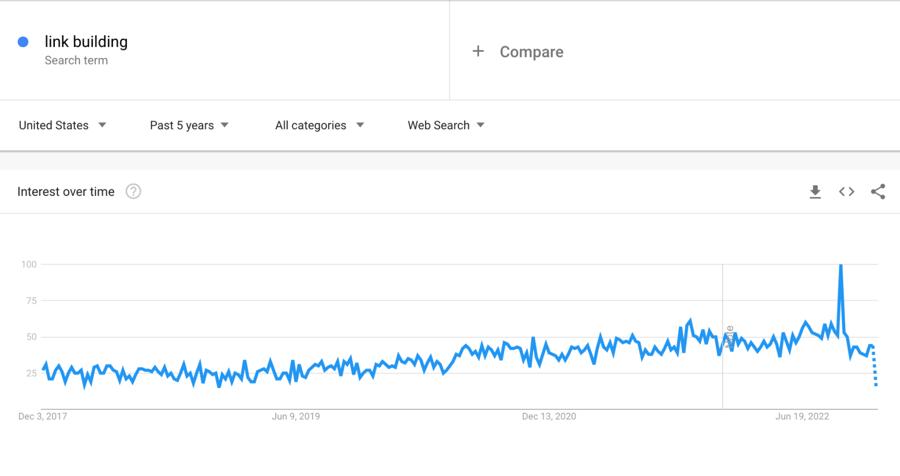
So if the ranking factor has been declining but more businesses are continuing to pursue this practice on an annual basis, how do you prioritize the amount of time and effort you should put into your link building efforts in 2023?
What if I told you there was a new way to generate backlinks for your website, without doing any spammy email outreach or trying to create multiple guest blogs?
Enter the database blog post.
What is a database blog post?
This is a type of blog post that includes the most exhaustive research on a given topic that calls for it. These posts strive to be the best resource on the internet for said topic, whether it includes statistics, people, companies, studies, products, etc.
Database blog posts are attractive to both journalists and other bloggers across your niche, who will then link to them in their own articles, thus helping to improve your website’s domain authority through this natural gain of backlinks.
Simply put, this type of blog post is a way to showcase your company’s knowledge and expertise around a particular topic through the collection of a) primary data generated by your own company or b) secondary data currently available on the internet today (like the one shown below).

Why should you write a database blog post?
If you’re looking to generate more organic traffic to your blog while also wanting to build up your backlink profile, then you should strongly consider incorporating database blog posts into your link building strategy.
We’ve just started to publish some of these posts for our clients, as well as for our own blog, and we’re already starting to see the backlinks rolling in—all without a single spammy outreach email!
Over the past few months we’ve managed to publish a total of 15 database blog posts, which have so far landed a total of 13 unique backlinks from different websites, citing our content as a source for their own posts centered around similar topics.
For example, check out this blog post we did around copywriting statistics.
After just a couple of months of publishing this post, Semrush’s Backlink Analytics tools is showing we already gained a total of five backlinks from it!

Two of those backlinks are nofollow links, but these early results are pretty impressive compared to what we normally see with the other backlink efforts I mentioned above (email outreach, guest posting).
And for the sake of transparency, here’s a list of precisely where these backlinks are coming from:
- Copywriting Price: What Costs Can You Expect?
- Copywriting Price: What Costs Can You Expect? (same blog post as above, but on their U.K. domain)
- COPYWRITING STATISTICS 2023-2022, 2021-2020
- Outsourcing Copywriting: Things You Must Know
- Your 7-Step Guide to Effective Copywriting for Small Businesses
After finishing this blog post, I encourage you to read through each of these listed above and find where they link back to our copywriting statistics article. (Hint: they’re all naturally placed within the main body of each post.)
And not only is this blog post contributing to our overall backlink profile—it’s getting us organic traffic too!
As you can see from the HubSpot chart below (looking at weekly organic page views since it was first published), this post continues to make traffic gains week after week.
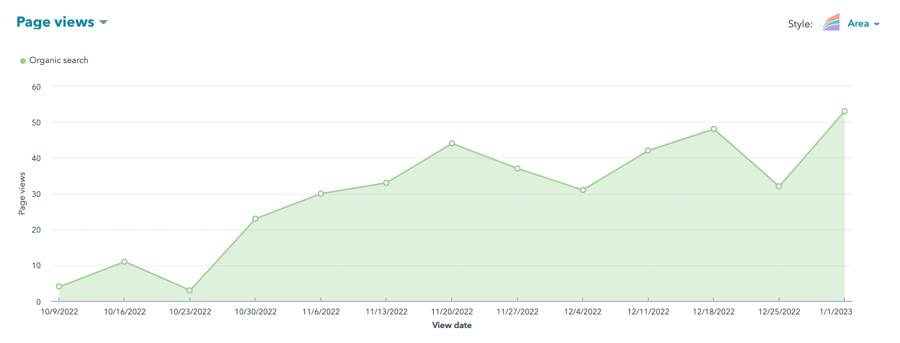
Still unsure if your company should give this a go, or need more supporting data to convince your team to do this?
To that, I recommend checking out this Backlinko case study where the author, Brian Dean, shares how he created his own database blog post and gained over 5,000 backlinks in 30 days!
(Side note: Brian refers to this tactic as the “reverse outreach” link building method.)
So now you can see why producing this type of post might be helpful for your company’s website. It helps with both building up your website’s organic traffic, as well as building your website’s backlink profile.
Now only one question remains!
How do you create a database blog post?
Here’s our step-by-step guide for creating your own database blog post:
- Identify the topic you want to cover.
- Outline your blog post.
- Set up a Google Sheet for data gathering.
- Perform (or outsource) data gathering.
- Review your collected data.
- Write and publish your blog post.
- Measure monthly performance.
1 Identify the topic you want to cover.
This topic should be associated with something that your target audience finds interesting or some piece of research/data that’s missing from your industry overall.
Unsure of where to start with your topic research? Check out these blog posts:
- How To Perform Blog Research: 6 Key Tips To Maximize SEO
- How To Use Semrush For Keyword Research: 18 Strategies To Pursue
2 Outline your blog post.
To prepare for writing your database blog post, you must have some sort of idea as to how you’ll approach it.
Typically, we like to have the following components covered before we start gathering research and generating copy for the post:
- What is the tentative title of the post?
- What set of keywords are we targeting with this post? (We usually aim for between three and five per blog post, but this can vary depending on the topic you’re covering.)
- How will we structure the layout of the blog post? (What specific sections will it cover and in what order?)
The screenshot below shows the template we use to outline blog posts at Nectafy.
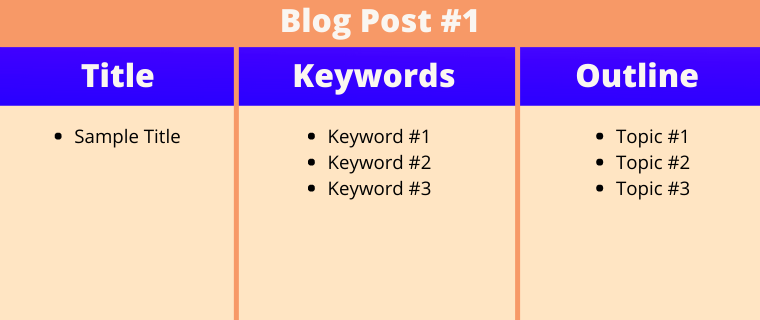
3 Set up a Google Sheet for data gathering.
Sign in to Google Sheets and create a blank spreadsheet to serve as your “database” for the post.
The way you set up your spreadsheet will vary depending on the topic you’re covering, but ideally you want to keep the following points in mind:
- Organize your google sheet for maximum efficiency. For example, create an extra column directly after your listed data column that shows how you’ll categorize each one. The screenshot below shows how we did this for the copywriting statistics blog post.

- When citing your sources, try your best to identify the original source of your gathered data (where it was first published) rather than the articles they were found in.
- Only use relevant data that’s been published within the last three years or so. Note that this may also vary depending on your industry and the frequency of reporting on relevant topics.
4 Perform (or outsource) data gathering.
If you or your team have the bandwidth to do it, search the internet for interesting data points around your topic using search engines like Google, Bing, or DuckDuckGo.
Or, if you’re using your own company data, have a data analyst slice and dice it into organized data points and record them in your spreadsheet.
Don’t have the resources to do either of these things? You can also outsource your internet research (or dissection of company data) to freelancers via a platform like Upwork or Fiverr.

Just make sure to do your due diligence when deciding which freelancer to work with for this task—not all are created equally!
5 Review your collected data.
To ensure the accuracy of your post, review the gathered data in your spreadsheet and do the following:
- Eliminate duplicate data points.
- Eliminate older, less relevant data points (as I mentioned above, anything older than three years should usually be excluded from your final list).
- Fix any grammatical errors introduced by the data entry process.
Once you’ve reviewed all your data points and removed the ones you don’t plan on using for your final article, you’re ready for the next step.
6 Write and publish your blog post.
Next, it’s time to add some context around your data points and publish the final post.
You’ll want to refer back to your outline from step #2 to see how you should approach this, but also keep in mind that you may want to call out certain data points that could help you better summarize a particular section of your blog post or put a few of them in a graphic, as we did for the different sections of our copywriting statistics post.
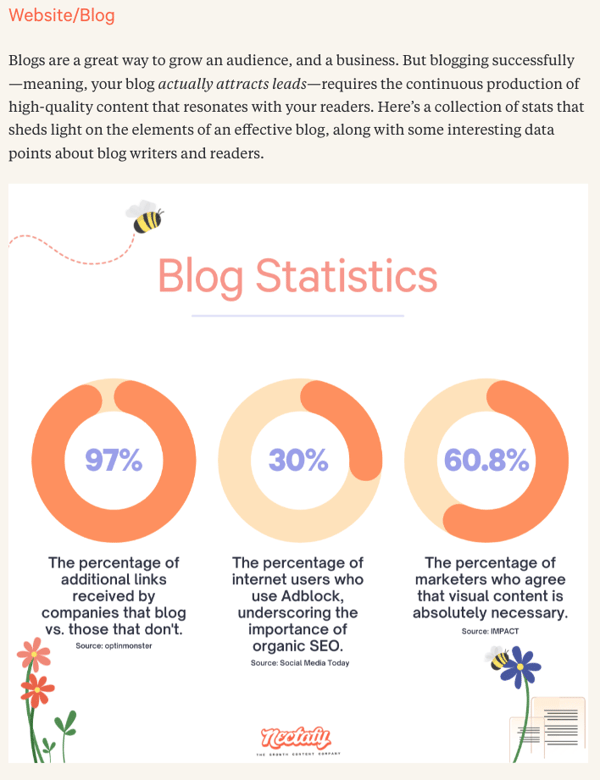
7 Measure monthly performance.
You can use tools like Semrush or Google Search Console to find the backlink data for your blog post, and then HubSpot or Google Analytics for organic traffic/lead data.
If you’re looking to combine all these data sources into one easy-to-read dashboard, we recommend using a platform like Databox to consolidate your measurement efforts. For more information about using this platform for blog reporting, check out our Databox review article.
How much could your company grow with growth content?
Calculate your expected growth in organic visits based on the average Nectafy client.
Get all these numbers in your inbox.
Don’t have time to create your own database posts?
That’s where we come in!
Schedule a call with our founder, Lance, and tell us why you think Nectafy would be a good fit to assist with your company’s content marketing efforts.

